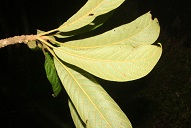| Green Sapote - Pouteria viridis | |||||||||||
|---|---|---|---|---|---|---|---|---|---|---|---|
 Fig. 1 Pouteria viridis - green sapote 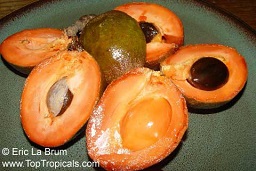 Fig. 2 P. viridis, Calocarpum veride 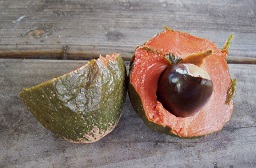 Fig. 3  P. viridis 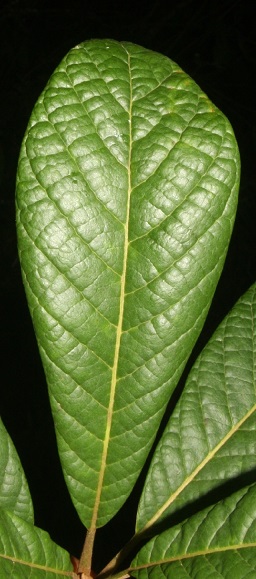 Fig. 4 Fig. 5 Fig. 6 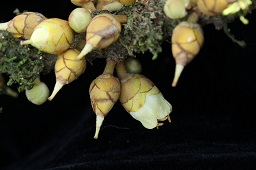 Fig. 9  P. viridis inflorescense Fig. 11 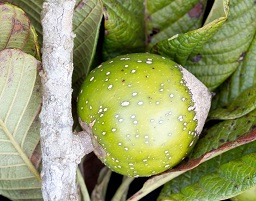 Fig. 12 Immature fruit 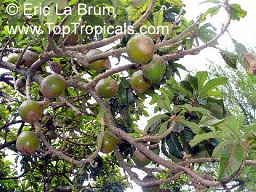 Fig. 15 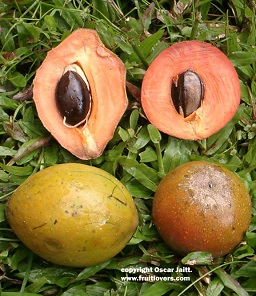 Fig. 16 Round and elongated types 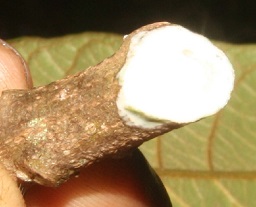 Fig. 17   Fig. 18 |
Scientific
name Pouteria viridis (Pittier) Cronquist Common names English: Green Sapote; Belize: Red Faisan, White Faisan; Costa Rica: Zapote, Zapote Blanco, Zapote De Castilla, Zapote De Montana, Zapote Injerto, Zapote Rojo, Zapote Verde; Czech: Sapota Zalená; Eastonian: Roheline Marmelaadipuu; El Salvador: Zapote Injerto, Zapote Verde; Guatemala: Injerto, Injerto Verde, Chul (Mam), Ixulul (Jacalteco), Raxtul (Quecchi), Raxtulul (Poconchi), Tulul (Tzutuhil); Honduras: Zapote Injerto, Zapote Verde, Zapotillo Calenturiento; Mexico: Chulul; Nicaragua: Zapote Amarillo, Zapote De Montana, Zapote Mico, Zapote Negro, Zapote Real, Zapote Verde 5 Synonyms Achradelpha viridis (Pittier) O. F. Cook; Calocarpum viride Pittier 1 Relatives Abiu, P. caimito; bully tree, P. multiflora; caimito, Chrysophyllum cainito; caimitillo, P. speciosa; canistel, P. campechiana; cinnamon apple, P. hypoglauca; curiola, P. torta; fruteo, P. pariry; macarancluba, P. ramiflora; mamey sapote, P. sapote; lucmo, P. obbovata; lucma, P. macrophylla; nispero montanero, P. macrocarpa; satin leaf, C. oliviforme; sapodilla, Manilkara zapota Family Sapotaceae Origin Southern and central America Uses Human consumption; planted in reforestation efforts and for erosion control 2 Height 40-80 ft (12-24 m) 7 Growth rate Slow the first year; moderate thereafter Trunk/bark/branches Young branches densely brown-hairy 7 Leaves Oblanceolate, 4-10 in. long, hairy on the upper midrib and downy on the adaxial surface 6 Flowers Borne in the leaf axils in groups of two to five and are tubular, five-lobed, and pinkish to white colored 6 Fruit Round to ovoid, 51-130 mm (2-5 in) long, 51-76 mm (2-3 in) in diameter; olive-green peel, orange-green blush; flesh is orange colored, smooth, and sweet and contains 1 to 2 dark brown, shiny seeds 6 Season In Florida is Dec. through Mar. 6 Cold tolerance Intolerant of freezing temp. 32 °F (0 °C) 6 Invasive potential * None reported Known hazard Abundance of white, gummy latex 7 Reading Material The Green Sapote, Manual of Tropical And Subtropical Fruits The Green Sapote in South Florida, Archives of the Rare Fruit Council of Australia Origin The tree is native and common in the wild in Guatemala and Honduras. 7 Description The green sapote (Pouteria viride Pittier) is indigenous to the highlands of Central America where this handsome large tree, with dark green foliage, reaches a height of about forty feet. It is considered by many to be one of the best of the Sapotaceous fruits. Appearance-wise it resembles the mamey sapote (P. sapota) to which it is closely related. Features distinguishing the two are the green sapote's smaller leaf size, its satiny brownish pubescence covering the midribs and veins of the undersides of the leaves, its slightly wavy leaf appearance, its rougher-textured bark of the trunk and its smaller fruit. Young seeding trees, lacking these differences which develop with age, can be difficult for the uninitiated to identify from its near 'look-alike twin', the mamey sapote. 8 Leaves The leaves are clustered at the tips of flowering branches and irregularly alternate along non-fruiting limbs. They are oblanceolate, pointed, 4 to 10 in (10-25 cm) long, 2 to 2 3/4 in (5-7 cm) wide; hairy on the upper midrib and downy-white beneath. 7
Flowers Flowers, borne in groups of 2 to 5 in the leaf axils and massed along leafless branches, are tubular, 5-lobed, pinkish or ivory and silky-hairy. 7
Fig. 10. P. viridis inflorescense Fruit Fruits take up to 9-10 months to ripen. 3 The fruit varies from nearly round to ovoid, pointed at the apex and sometimes at the base; may be 3 1/2 to 5 in (9-12.5 cm) long and 2 1/2 to 3 in (6.25-7.5 cm) thick, with thin, olive-green or yellow-green skin dotted with red-brown and clinging tightly to the flesh. The flesh is light-russet, of fine texture, melting, fairly juicy and sweet; of better flavor than the sapote. There may be 1 or 2 dark-brown, shiny, elliptic or ovate seeds to 2 in (5 cm) long, with a large, dull, grayish hilum on one surface. 7
Varieties There are two types, round and elongated (Fig. 16). Harvesting The fruit is picked while hard and held until soft. 7 Propagation The plant is usually grown from seed. It can also be propagated by grafting it onto the mamey sapote (P. sapota). Grafting allows the grower to expect a crop much sooner than starting from seed. 2 The tree is productive, but has the disadvantage of not coming into bearing earlier than eight or ten years from seed. 9 Food Uses The reddish-brown pulp is melting, sweet and somewhat juicy. The flavour is somewhat similar to the sapote (P. sapota) but is more delicate and the flesh is finer and smoother in texture. 4 The seeds are edible, as well, and can be served roasted. The latex of the tree can be made into chewing gum. 2 Medicinal Properties ** Parts of the plant have traditional medicinal uses. The seed oil is applied to the hair to prevent hair loss. Bark extracts have been used for skin conditions, and the latex has been applied to the skin to treat warts and fungal infections. 2 Other Uses The latex (chicle) has been commercially collected and marketed like that from the sapodilla for use in chewing gum. 7 The strong, reddish wood of the tree has occasionally been used for construction and to make furniture and tools. 2 Other Edibles in the Pouteria Genus Abiu, P. caimito Canistel, P. campechiana Mamey Sapote, P. sapota Further Reading The Green Sapote, A New Fruit for South Florida, Florida State Horticultural Society Cultivation of Mamey Sapote and Green sapote, Archives of the Rare Fruit Council of Australia Green Sapote, Sub-Tropical Fruit Club of Qld Evaluation of fruit from a green sapote (Calocarpum viride Pitt.) selection at the University of Florida TREC, Florida State Horticultural Society pdf List of Growers and Vendors |
||||||||||
| Bibliography 1 "Taxon: Pouteria viridis (Pittier) Cronquist." USDA, Agricultural Research Service, National Plant Germplasm System, 2019, Germplasm Resources Information Network (GRIN-Taxonomy), National Germplasm Resources Laboratory, Beltsville, Maryland, npgsweb.ars-grin.gov/gringlobal/taxonomydetail.aspx?102619. Accessed 23 May 2019. 2 The Encyclopedia of Fruit & Nuts. Edited by Jules Janick and Robert E. Paull, Cambridge, CABI, 2008. 3 "Pouteria viridis, Calocarpum veride." TopTropicals, toptropicals.com/cgi-bin/garden_catalog/cat.cgi?uid=Pouteria_viridis. Accessed 30 May 2019. 4 Facciola. S. Cornucopia II A Source Book of Edible Plants. Vista, Kampong Publications, 1998. 5 Lim T. K. "Pouteria viridis." Edible Medicinal And Non-Medicinal Plants, Springer, Dordrecht, 2013, doi.org/10.1007/978-94-007-5628-1_25. Accessed 30 May 2019. 6 Crane, J. H., et al. "Evaluation of fruit from a green sapote (Calocarpum viride Pitt.) selection at the University of Florida Tropical Research and Education Center, Homestead." Proc. Fla. State Hort. Soc. 114:5-6, 2001, Florida State Horticultural Society, fshs.org/proceedings-o/2001-vol-114/5-6%20(CRANE).pdf. Accessed 30 May 2019. 7 Fruits of Warm Climates. Julia F. Morton, Miami, 1987. 8 Whitman, William F. Five Decades with Tropical Fruit, A Personal Journey. Stuart, Quiscalis Books, 2001. 9 Popenoe, Wilson. Manual of Tropical and Subtropical Fruits. 1920, London, Hafner Press, 1974. Photographs Fig. 1,18 Maguire, Ian. "Pouteria viridis - Green Sapote." Tropical Fruit Photo Archive, UF/IFAS/TREC, www.ianmaguire.com/033004.htm. Accessed 30 May 2019. Fig. 2,15 La Brum, Eric. "Pouteria viridis, Calocarpum veride." TopTropicals, toptropicals.com/cgi-bin/garden_catalog/cat.cgi?search_op=and&keyword_op=and&language=e&number=5&no_change_lang =1&v1=inf&user=tt&sale=1&first=351. Accessed 30 May 2019. Fig. 3 I Like Plants! "Pouteria viridis fruit." 18 Apr. 2009, Commons Wikimedia via Flickr (CC BY 2.0), commons.wikimedia.org/wiki/File:Pouteria_viridis_fruit.jpg. Accessed 24 May 2019. Fig. 4,5,6,7,8,11,17 Janzen, Daniel H. "Pouteria viridis." Guanacaste Dry Forest Conservation Fund, BioBot06805, 2010, BOLDSYSTEMS, (CC BY-NC-SA 3.0), v3.boldsystems.org/index.php/Taxbrowser_Taxonpage?taxid=491432. Accessed 30 May 2019. Fig. 9 Montiel, O. M. "Pouteria viridis, (Pittier) Cronquist, Inflorescense." Tropicos Specimen Data, Missouri Botanical Garden, Stevens, 30814, Nicaragua, Cat. no. 100200050, 19 June 2009, GBIF, (CC BY 4.0), www.gbif.org/occurrence/100124236. Accessed 23 May 2019. Fig. 10,12,13,14 Montiel, O. M. Pouteria viridis (Pittier) Cronquist, Stevens, 30814, Nicaragua, Cat. no. 100163692, 29 Dec. 2010, GBIF, (CC BY 4.0), www.gbif.org/occurrence/1257688200. Accessed 23 May 2019. Fig. 16 Jaitt, Oscar. "Two types of green sapote." Fruitlovers, www.fruitlovers.com/Gallery1/2GreenSapoteTypes.jpg. Accessed 17 July 2019. * UF/IFAS Assessment of Non-native Plants in Florida's Natural Areas ** Information provided is not intended to be used as a guide for treatment of medical conditions. Published 18 July 2019 LR. Last update 28 July 2020 LR |
|||||||||||

